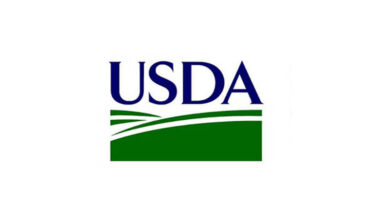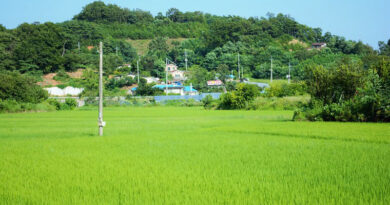How Is Climate Change Impacting the Mississippi River?
09 January 2023, US: The Mississippi River is a vital resource for U.S. agriculture connecting farm products in the Midwest to export terminals at the Louisiana Gulf. Roughly 60% of all US corn and soybean exports flow to the Louisiana Gulf for export to world markets, according to USDA-AMS.
This fall, attention has focused on the importance of this key mode of transportation as persistent and expansive drought conditions have led to epic lows on the Mississippi River. The result has been a significant disruption to grain flows and caused farmers to feel the economic pain of this lost avenue for trade.
While the science on climate change suggests temperatures will continue to warm, the impacts of a warmer climate on the Mississippi River are not immediately clear. On the one hand, rising sea levels may increase the risk of flooding at export terminals along the Louisiana Gulf during hurricanes which could disrupt trade. Warmer temperatures are also likely to bring more persistent drought events, as well as create more common and intense heavy precipitation events. It is in the extremes – too much water or too little water – that causes barge transportation disruptions and is a likely consequence of future climate scenarios.
What Happens When the Mississippi River Is Disrupted?
When the Mississippi river is disrupted, U.S. farmers face lower prices because the cost to reach export terminals is increased. But the extent of how far reaching those price impacts across the U.S. Midwest are not well understood.
In this report, we look at three key factors as it relates to disruptions along the Mississippi River and the corresponding financial burden on U.S. farmers:
- How do price impacts vary along the Mississippi River?
- Have the impacts changed in recent decades?
- What is the impact on U.S. competitiveness in global export markets as a result of Mississippi River trade disruptions?
To answer these questions, we examine three key historical events that have led to significant disruptions in grain flows on the Mississippi River. The first is Hurricane Katrina, which impacted the Louisiana Gulf in the fall of 2005 and disrupted grain movements for a 9-week period from August 29, 2005 to November 2, 2005.
The second event, also a major hurricane, was Hurricane Ida, again hitting the Louisiana Gulf on the 16-year anniversary of Hurricane Katrina. Like its predecessor, Hurricane Ida led to protracted trade disruptions from August 28, 2021 to November 8, 2021.
Finally, we examine the most recent drought event in the fall of 2022 which started September 19, 2022 and continues to persist as of this report in December 2022.
Our examination focuses on corn prices around the U.S., relying on the FBN® historical cash price dataset on over 3,000 markets.
Hurricane Katrina in 2005
Hurricane Katrina had prolonged impacts on grain pricing and transportation during the fall of 2005 (LSU AgCenter, 2006). The immediate consequence was loss of power and grain export terminals which prevented loading and unloading grain. It also destroyed river channels & markers preventing barge traffic, and barges were backed up for weeks waiting to move thereby exacerbating the storm’s early destruction.
The graphic below shows the impacts of Hurricane Katrina six weeks after the initial storm hit the Louisiana Gulf. The map on the left shows the extent to which regional corn prices were reduced as a direct result of the hurricane. Darker red areas are most impacted with losses of 40-cents a bushel or more to a farmer’s corn price. The graphs on the right show the impact of Hurricane Katrina on barge costs either from the Upper Mississippi region of St Paul, MN or the Lower Mississippi region of Memphis, TN. The bars represent higher costs versus normal for each week following the Hurricane.
Key Observations from Hurricane Katrina
- Corn prices were impacted across a wide area as a result of Hurricane Katrina. Because the Illinois River and Ohio River serve as key grain flow channels to the Mississippi, this created a solid economic channel for the ripple effects of Hurricane Katrina to be felt.
- Farmers in the Mississippi Delta region were most impacted and suffered the biggest price losses versus their counterparts in key grain belt states.
Hurricane Ida in 2021
Hurricane Ida made a most unwelcome landfall exactly 16 years to the day that Hurricane Katrina struck. And like its predecessor, Ida had lasting financial impacts that persisted for several months causing deep losses for U.S. farmers.
The graphic below shows the price impacts four weeks after Hurricane Ida, which resulted in the most consequential price losses for farmers. Likewise, barge rates in the right hand panel also peaked out at about a 50-cent increase versus normal as a result of the disruptions.
Key Observations from Hurricane Ida
- As in Hurricane Katrina, price impacts were most pronounced in the Mississippi Delta region and had smaller impacts into the corn region of the U.S. Midwest.
- But, unlike Hurricane Karina, the maps for Hurricane Ida show farmers in the key grain belt states faced a much smaller impact and less area of the grain belt region was impacted. Even though Hurricane Katrina and Ida had similar impact periods from late August to November, and barge rate increases for both hurricanes were on par with each other, Hurricane Ida had less residual impact on farmers in the Upper Midwest, especially, IA, MN & WI.
- The more muted impact 16 years later is likely a reflection of increased demand over that time period from the growth of ethanol plants. In 2005, before the ethanol industry evolved, there was less competition for corn and as a result the loss of river shipping had a more pronounced impact on prices. By 2021, ethanol production capacity in Iowa and Minnesota had nearly quadrupled in size, representing a significant demand alternative for farmer grain movements
Drought in 2022
Unlike the two hurricane events discussed above, the drought of 2022 led to much longer and more profound price impacts as a result. Barge rates were three to four times higher than the biggest impacts seen from the two hurricane events, and as such led to a much wider strike area of price impacts.
Key Observations from 2022 Drought
- Price impacts were more severe because of the inability for any barge traffic to move during extreme low-water conditions.
- However, the biggest impact areas continue to be the Mississippi Delta region, but as far away as Indiana and Ohio along the Ohio River had sizable impacts.
- Upper Midwest farmers in Iowa and Minnesota felt limited impacts as ethanol continued to provide a key market for farmers in those regions.
Implications on U.S. Price Competitiveness
While disruptions in grain flows along the Mississippi River have immediate consequences to farmers for prices paid, another distorting impact is in the international market. U.S. grain prices for export from the Gulf market to foreign buyers will climb sharply due to the scarcity of grain to meet needs. And as such, this has an impact on future sales of grain to international buyers.
The chart below shows the amount of distortion seen as a result of the Mississippi River drought during the fall of 2022. The graphic illustrates the difference or spread between U.S. corn export prices at the Louisiana Gulf and the corn price at an export destination in Brazil. The three panels illustrate price differentials for different delivery periods in the future. The green bars show what transpired between September and November of 2022 while the orange lines are the recent 5-year averages for comparison.
Key Observations on International Competitiveness
- Massive distortions occurred during the Mississippi drought period with U.S. corn prices trading as much as $1.50 a bushel more than our competition in Brazil. During this time of the year, U.S. prices are generally less than Brazil prices, giving U.S. corn an advantage in international markets.
- Not only did prices for immediate shipment get distorted, but buyers who would be positioning for 1- or 2-month ahead shipments (which is the normal course of international buying) would still see U.S. prices uncompetitive versus Brazil.
- The consequence of this distortion is likely a sizable amount of lost export business, which serves to limit U.S. demand and has a second order effect on all farmers by depressing prices further.
Also Read: Outbreak of Tobacco Caterpillar on Wheat in Madhya Pradesh
(For Latest Agriculture News & Updates, follow Krishak Jagat on Google News)















